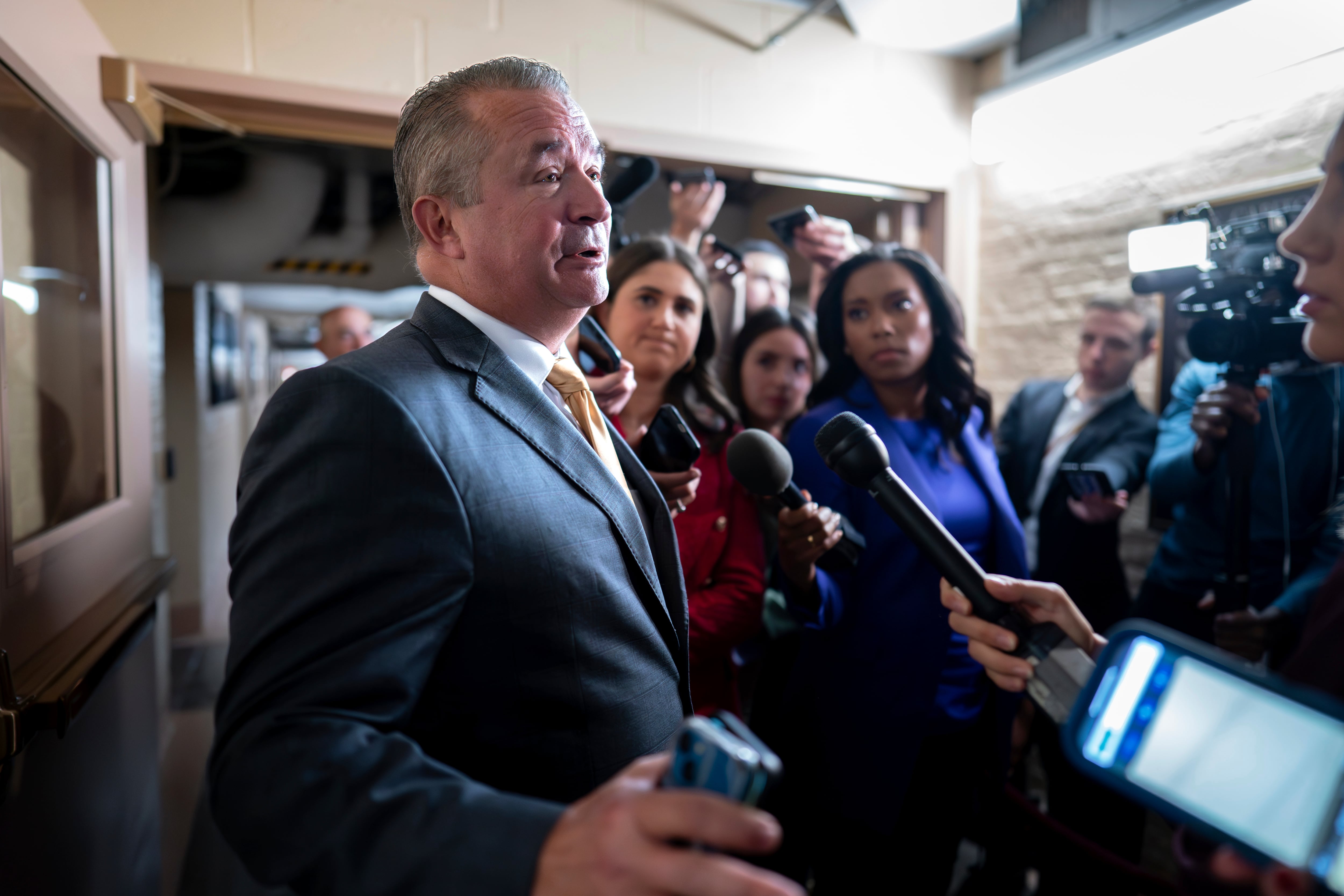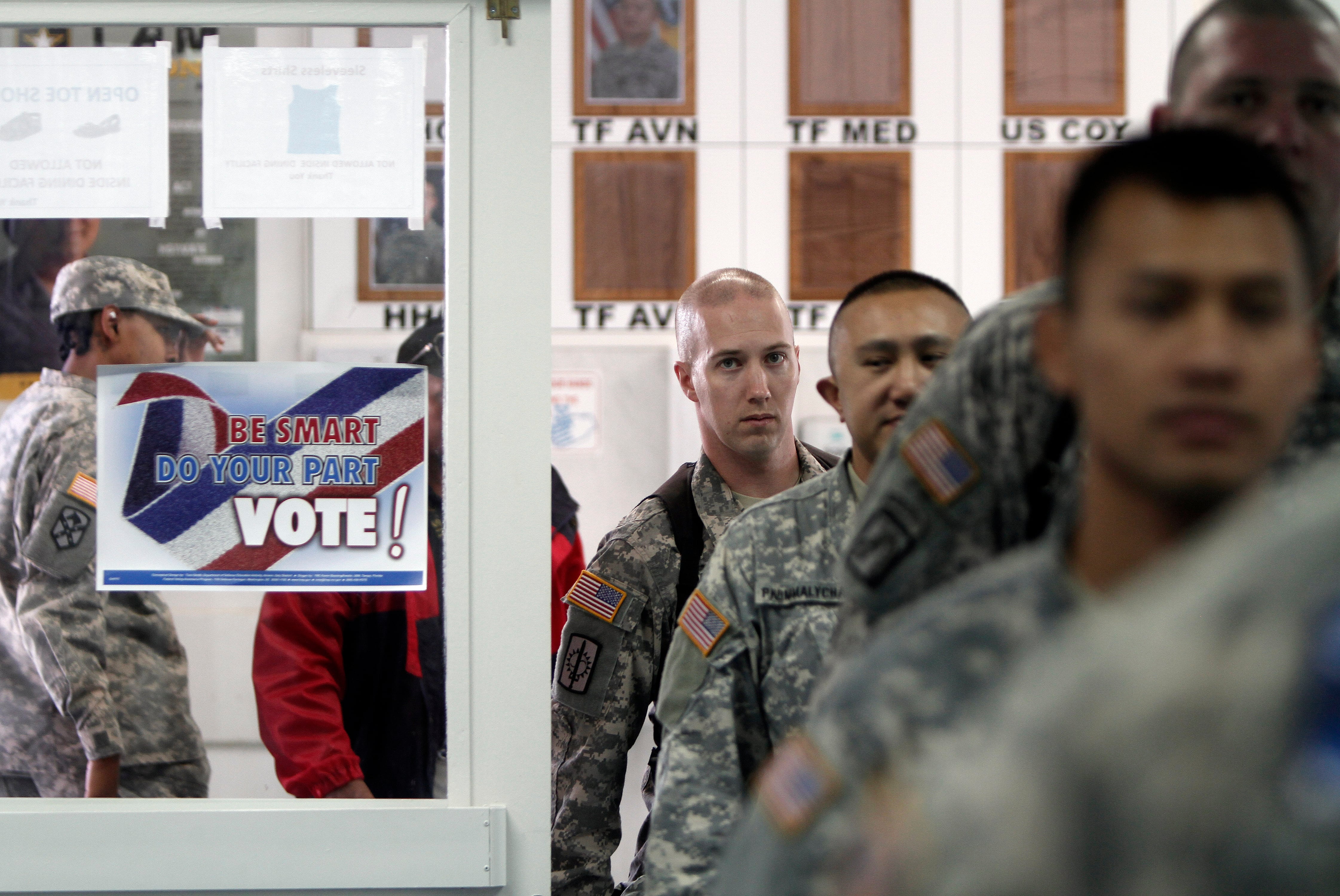Defense Secretary Lloyd Austin traveled Friday to Maxwell Air Force Base, Alabama, where he announced new goals to lower living costs and improve the quality of life for service members and their families.
Austin joined first lady Jill Biden, touring the base to bring attention to a universal pre-kindergarten program put in place for schools run by the Defense Department.
The two visited a classroom and spoke with teachers as kindergarten students played in the background. Biden and Austin later addressed troops and their families in a school auditorium, where the secretary announced the new measures.
RELATED

The Pentagon branded the trip around “Taking Care of Our People,” Austin’s plan to solve issues such as child care and low pay for service members. He issued another memo outlining the effort Friday morning.
The memo included a list of seven new steps to aid service members, from making it easier for military families to move to offering more military spouses money to pursue their own careers. In sum, the Pentagon hopes these ideas will help ease pressing challenges for personnel, from housing quality to child care.
The measures include:
- Flexible spending accounts for active duty troops and certain reservists to hold up to $3,200 pretax for qualified medical expenses
- Expanded WiFi access in barracks
- Increasing the number of days to expense temporary lodging during military moves from 14 to 21 days
- Making more military spouses eligible for funds to help train for their own careers
- Helping recruit and retain more child care workers
- Studying three remote posts next year to improve the quality of life at such installations
- Reviewing the quality and cost of uniforms
Even so, many of the goals listed are either tweaks to past announcements or lack specific timelines. When asked whether the Defense Department was keeping pace with service members’ needs, several senior defense officials briefing reports before the trip were oblique.
“There’s a balance here between making sure that we’re addressing the short-term needs and the immediate acute needs with putting in place some longer-term programs,” said one official, who like the others, spoke anonymously per Pentagon policy.
There’s also a balance dictated by funding.
Due to a deal struck to avoid a government default last year, defense spending is capped at a 1% increase in fiscal 2025. The limit is forcing members of Congress into a bind: renege on the deal or end up having to choose between funding big weapons programs or pay raises.
Different committees in the two chambers have chosen different paths, with the House Armed Services Committee proposing an almost 20% pay raise for junior enlisted members and a 4.5% raise for other ranks. The Senate’s bill, meanwhile, would skirt the caps altogether and surge defense spending.
The eventual bill will need the backing of the House and Senate appropriations committees, which actually control government funding.
RELATED

Regardless of the eventual deal, because of the presidential election, Congress will almost certainly start the year in a short-term funding bill known as a continuing resolution. These measures freeze government spending at the previous fiscal year’s level, a headache for the Pentagon as it manages rising costs and new programs.
“Because the baseline budget would not change, that would force us to offset the costs of these well-deserved pay raises, and it would cut into other programs and accounts at potentially damaging levels,” Pentagon Press Secretary Maj. Gen. Pat Ryder said in a Thursday briefing.
Another defense official, speaking before the trip, said limited funds affected their choice on how far to expand the My Career Advancement Account, or MyCAA, workforce development program that provides tuition assistance for military spouses.
“We have a certain amount of dollars that would be put towards MyCAA, and we wanted to start with those ranks that were going to have the highest impact,” the official said.
The Pentagon’s four-year report on military pay is due early next year, and while the officials wouldn’t offer specifics on what it would cover, they said that the Basic Allowance for Housing would be a key part.
BAH compensation covers the housing costs of active duty troops stationed in the 50 U.S. states who don’t live on government-owned property. BAH rates, which aim to cover 95% of housing costs, are linked to local rental markets and vary based on a service member’s pay grade, duty station location and whether they have dependents.
However, given how fast housing costs are rising in some areas, keeping pace with commercial rents near military sites can be challenging.
“There’s been a lot of progress, and I think it’s progress that we’re proud of, but with the recognition that we have a lot more work to do,” the first official said.
This story has been updated with details from the visit.
Noah Robertson is the Pentagon reporter at Defense News. He previously covered national security for the Christian Science Monitor. He holds a bachelor’s degree in English and government from the College of William & Mary in his hometown of Williamsburg, Virginia.




